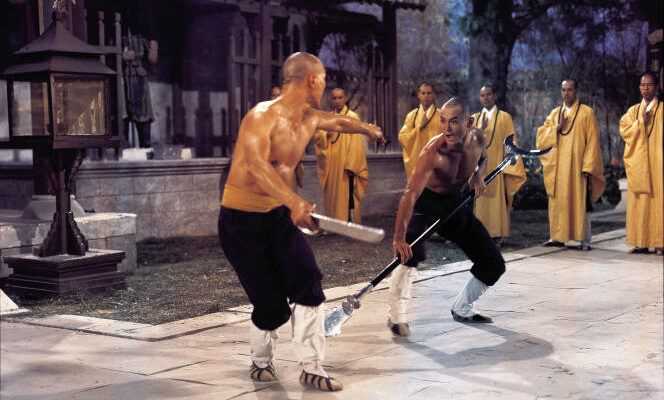War, as we know at least since Sun Tzu, is not only a technique but an art, which engages an aesthetic relationship to the world: a philosophy of life, a discipline of the body, a writing of the gesture, an ideal of efficiency and beauty converging in action. It is at least in this sense that the Quai Branly Museum, with its major back-to-school exhibition “Ultime combat. Martial arts of Asia ”, addresses the vast field of oriental warmongering: as a great production of forms and stories, practices and imaginations, outlines of a culture having since the second half of the XXe century swarmed around the world.
Bringing together a number of heterogeneous pieces, the exhibition takes care to go beyond the base of the fine arts by the side of popular culture, old sculptures and scrolls painted in manga boards and video games. Conceived by Julien Rousseau, curator attached to the museum, and Stéphane du Mesnildot, specialist in Asian cinema, the visit especially gives pride of place to martial arts films which have largely contributed to disseminating their iconography, judiciously integrating in its course a good thirty extracts by interposed screens.
In the chapter of origins, we of course find the sacred texts of ancient India, the Vedas and the Upanishads, which stage the clashes between divinities embodying natural principles, and foreshadow the great Eastern religious currents, including Hinduism and buddhism. Then come epics like the Mahabharata where the Ramayana which install the motives of the fighting gods in a narration which sit mythologically, after the Ve century, the emerging dynasties and the expansive vocation of Hinduism.
These mythological tales will of course infuse all kinds of representations, in the theater (as evidenced by the masks, costumes, puppets or shadow theater figurines presented here), as in the visual arts and literature (the founding novel The Journey to the West by Wu Cheng’en). Tutelary figures of Buddhism, introduced in China in the Ier century, are also mentioned, such as Bodhidharma, whose legend has it that he founded the famous Shaolin school of combatant monks with formidable techniques, which took up military functions under the Ming dynasty (1369-1644) and whose war against the factions Manchu people will be the subject of countless accounts.
Training and discipline
Martial arts cinema, whose approach is shared here between its Chinese and Japanese branches, constitutes one of the great kinetic adventures of the 20th century.e century, a formidable epic of movement, rising by degrees towards abstraction. Hong Kong will long be its stronghold, with the Shaw Brothers studios, installed on the peninsula since the end of the 1950s and launched in 1965 in the intensive production of kung fu and saber films, known as wu xia pian. The martial body passes through a whole series of states there. First an ascending phase of construction: training and discipline bringing him step by step to mastering his art. As in The 36e Shaolin Room (1978), by Liu Chia-Liang, where a young fishmonger’s son trained for five years in kung fu techniques to resist Manchu oppression.
You have 48.16% of this article to read. The rest is for subscribers only.
